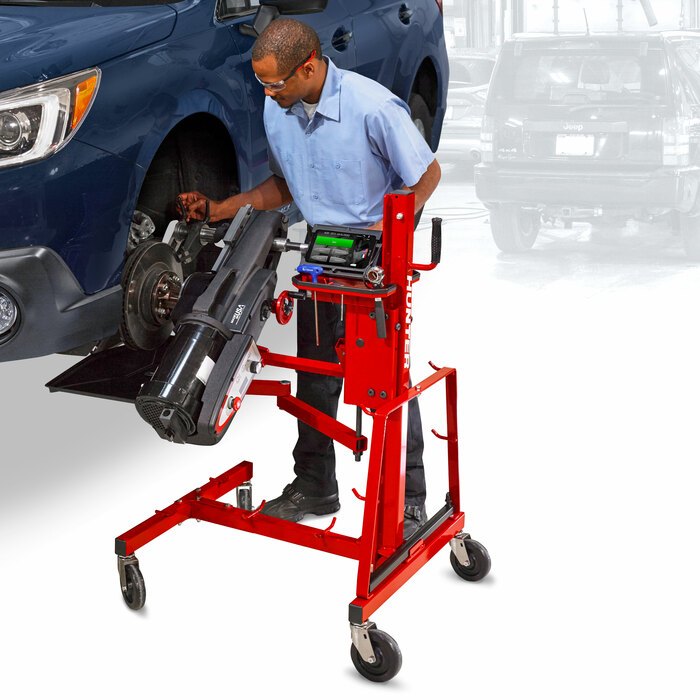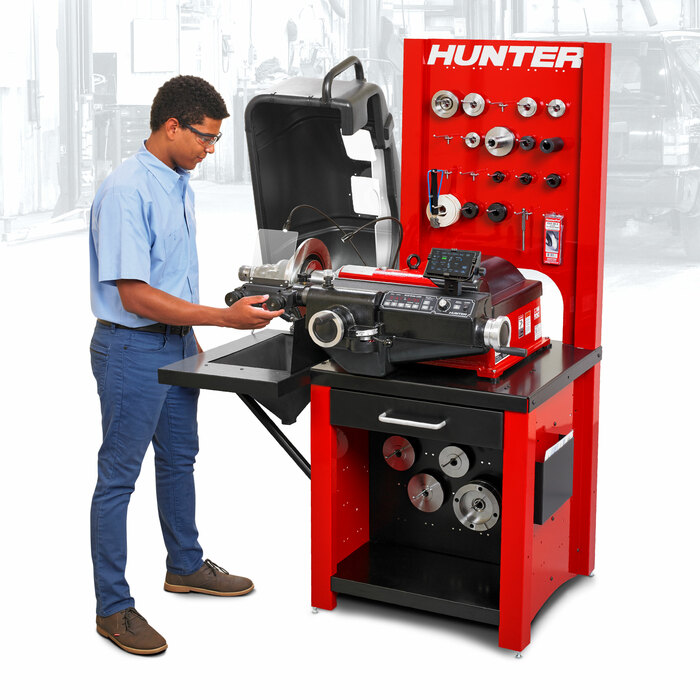How to find the best brake lathe machine for your shop
Choosing the best brake lathe machine for your shop is an important decision. Below is a list of things to consider when researching both on-car lathes and bench lathes. When you are ready to learn more or want to see a Hunter lathe in action, you can reach out to your local Hunter team, who can provide detailed product information, on-site demos and pricing information.
All lathes

Make sure the manufacturer supports their products in the field with a team of reliable service representatives.

A brake lathe should last a very long time, be sure to choose a lathe that is built to last. Hunter Engineering has local business consultants that can visit your shop and help you choose the right lathe to fit your needs.

Digital readouts are easier to understand and reduce technician errors.
Adaptor Quality
High quality adaptors absorb vibrations, improving surface finish.
On-car brake lathes
Motor Power
Turning rotors on the car takes power to overcome drivetrain friction. Greater horsepower will allow you to turn more vehicles with your brake lathe.
Reverse Operation
Some vehicles have less drivetrain friction when turning in one direction versus the other. Having the ability to operate in reverse offers greater flexibility to service a wider range of vehicles.
Speed Adjustment
Some differentials will lock up when spun too quickly requiring you to drop the driveshaft to turn the rotors on the vehicle. This hassle can be avoided by purchasing a lathe that can operate below this RPM.
Upside Down Operation
hen turning the opposite side of the car, the lathe must be flipped over. Ensure that your lathe doesn't require you to work upside down to get the job done.
Durability
When using a brake lathe, it is likely the technician will “crash” the bits into things like rotor hats. Make sure the internal drivetrain is designed to handle this without expensive repair.
Expandability
Rotors on certain vehicles are very large. Be sure to choose a versatile lathe that can be expanded to handle these unique rotors.
Bench lathes
Mass
A heavy and sturdy lathe can help prevent vibrations or "chatter". Reducing mass can save on cost, but the reduced mass can introduce more vibration.
Speed Adjustment
Rotors “sing” or “chatter” at certain speeds which will ruin the surface finish. This can be avoided with a lathe that has adjustable speed settings.

A lathe that can easily switch between servicing drums and discs will save time and money.
Rotor Thickness
A lathe that can measure rotor thickness will help prevent technicians from cutting rotors too thin.
Independent Feed
Different rotors call for different feed rates. Being able to adjust the feed rate independently of rotor speed adds versatility.
Adaptor Variety
Having a variety of adaptors allows technicians to mount rotors and drums from many types of vehicles.
Hunter Brake Lathes

AutoComp Elite®
On-car brake lathe





